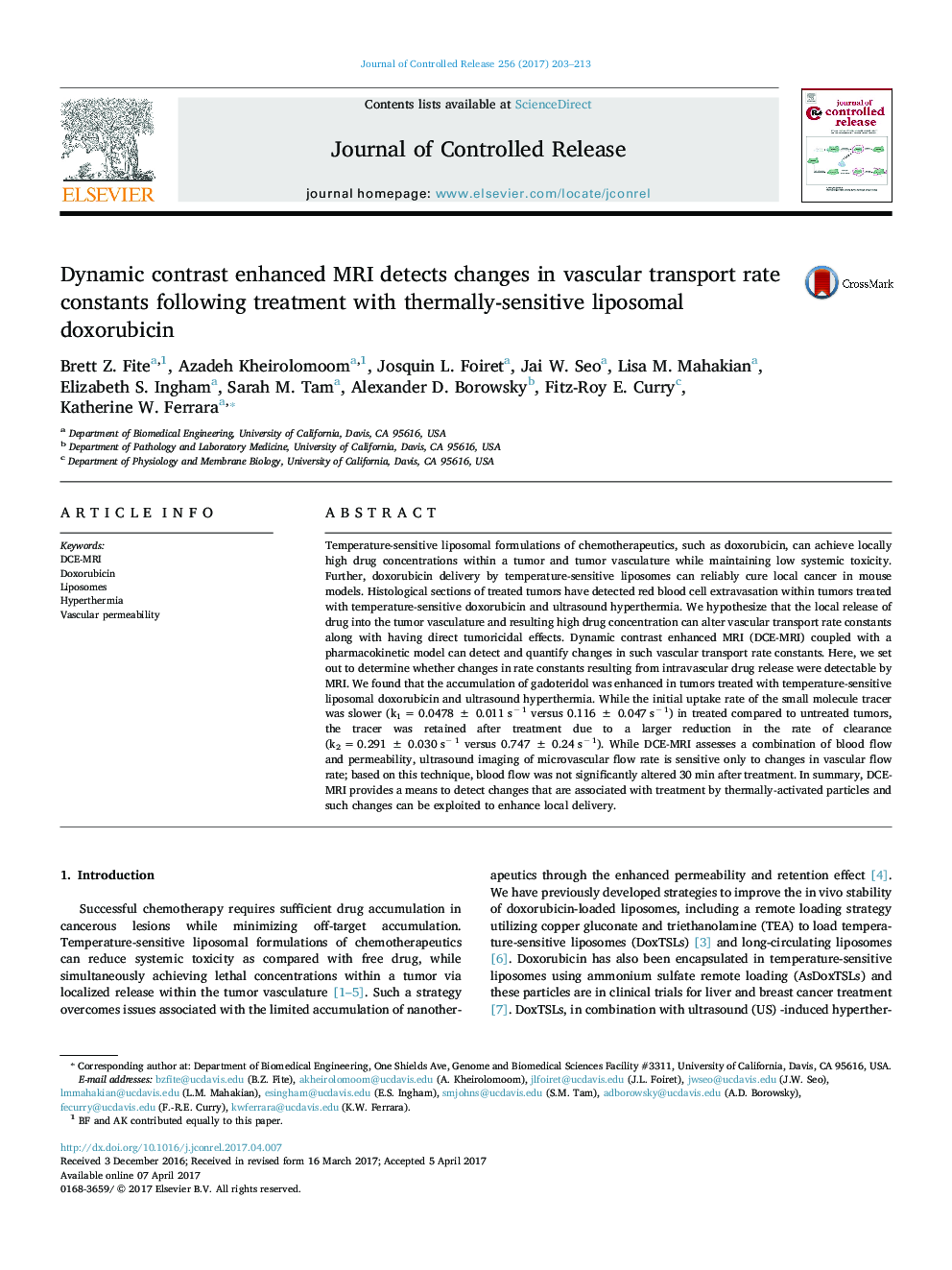| کد مقاله | کد نشریه | سال انتشار | مقاله انگلیسی | نسخه تمام متن |
|---|---|---|---|---|
| 5433773 | 1508994 | 2017 | 11 صفحه PDF | دانلود رایگان |

Temperature-sensitive liposomal formulations of chemotherapeutics, such as doxorubicin, can achieve locally high drug concentrations within a tumor and tumor vasculature while maintaining low systemic toxicity. Further, doxorubicin delivery by temperature-sensitive liposomes can reliably cure local cancer in mouse models. Histological sections of treated tumors have detected red blood cell extravasation within tumors treated with temperature-sensitive doxorubicin and ultrasound hyperthermia. We hypothesize that the local release of drug into the tumor vasculature and resulting high drug concentration can alter vascular transport rate constants along with having direct tumoricidal effects. Dynamic contrast enhanced MRI (DCE-MRI) coupled with a pharmacokinetic model can detect and quantify changes in such vascular transport rate constants. Here, we set out to determine whether changes in rate constants resulting from intravascular drug release were detectable by MRI. We found that the accumulation of gadoteridol was enhanced in tumors treated with temperature-sensitive liposomal doxorubicin and ultrasound hyperthermia. While the initial uptake rate of the small molecule tracer was slower (k1 = 0.0478 ± 0.011 sâ 1 versus 0.116 ± 0.047 sâ 1) in treated compared to untreated tumors, the tracer was retained after treatment due to a larger reduction in the rate of clearance (k2 = 0.291 ± 0.030 sâ 1 versus 0.747 ± 0.24 sâ 1). While DCE-MRI assesses a combination of blood flow and permeability, ultrasound imaging of microvascular flow rate is sensitive only to changes in vascular flow rate; based on this technique, blood flow was not significantly altered 30 min after treatment. In summary, DCE-MRI provides a means to detect changes that are associated with treatment by thermally-activated particles and such changes can be exploited to enhance local delivery.
271
Journal: Journal of Controlled Release - Volume 256, 28 June 2017, Pages 203-213